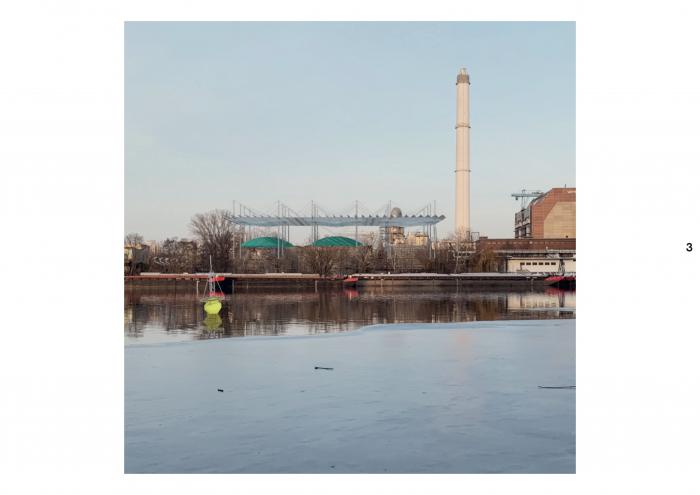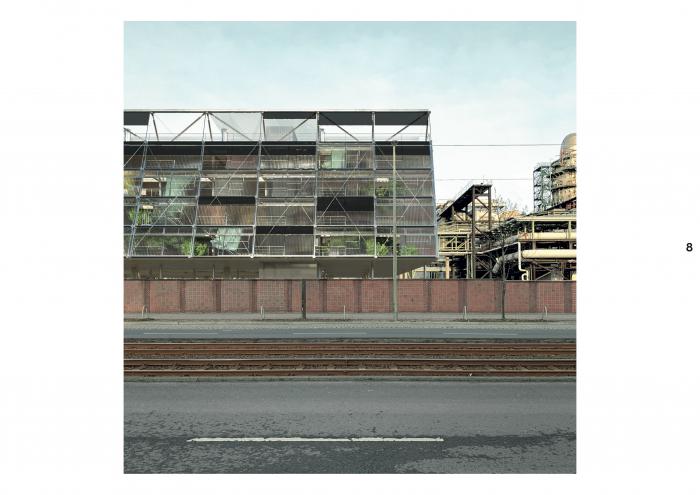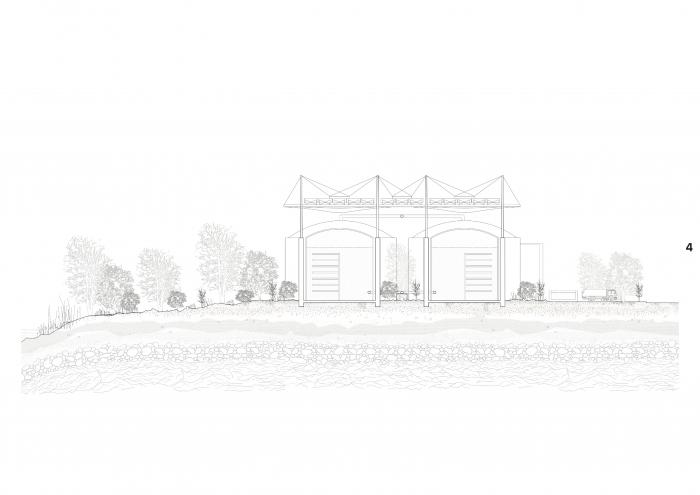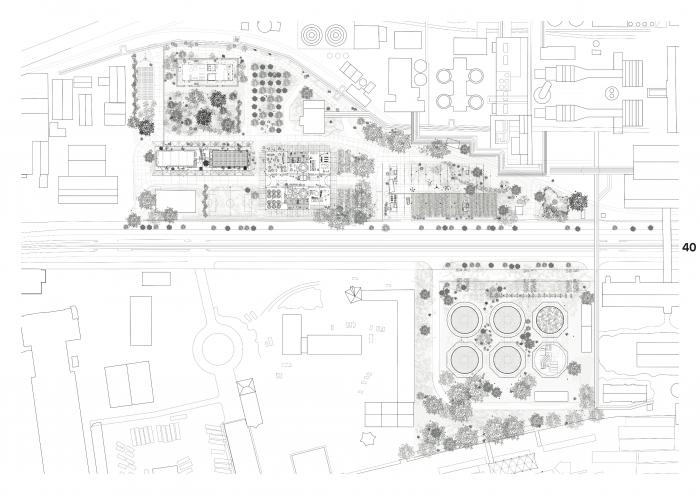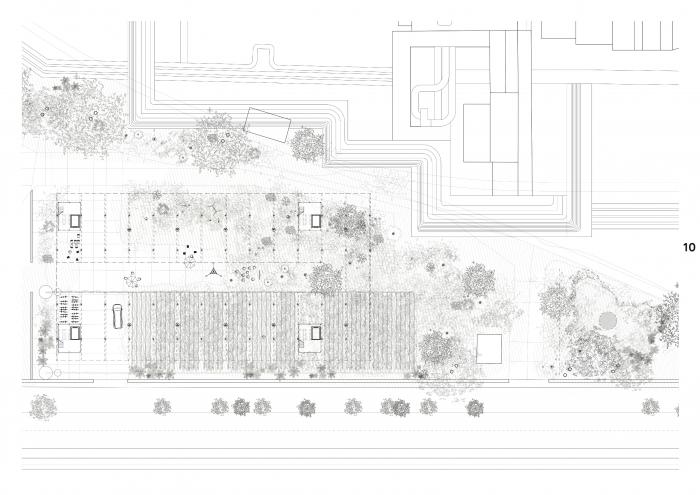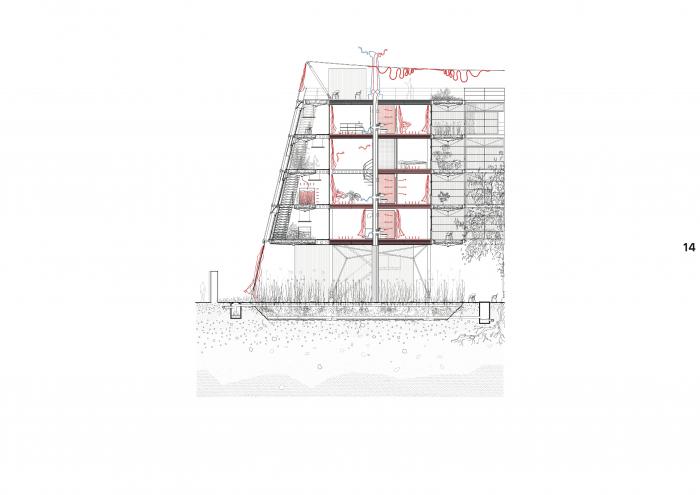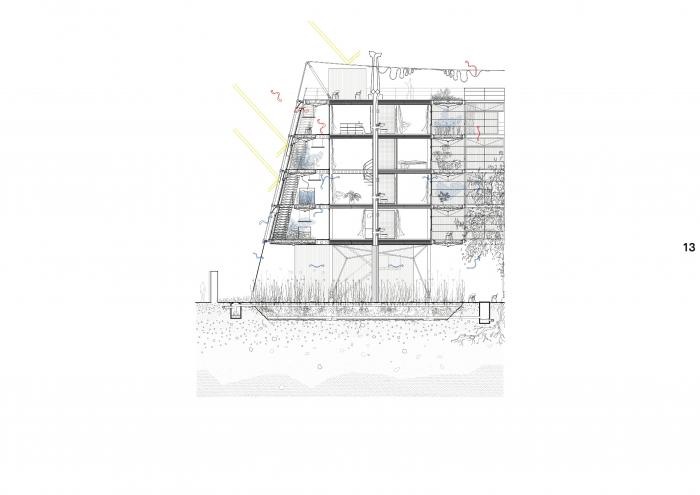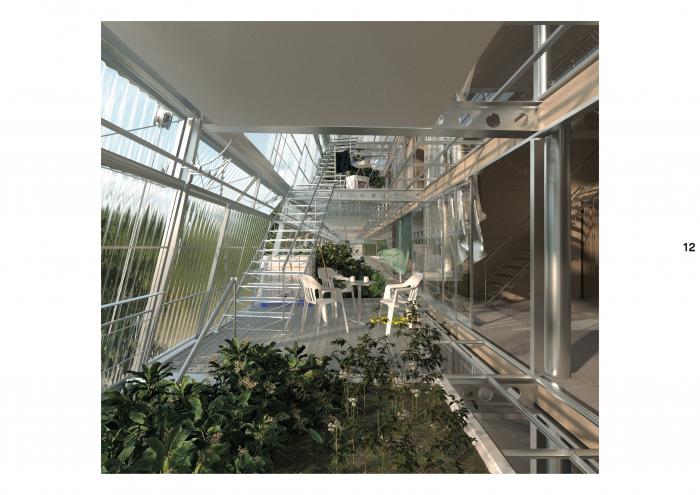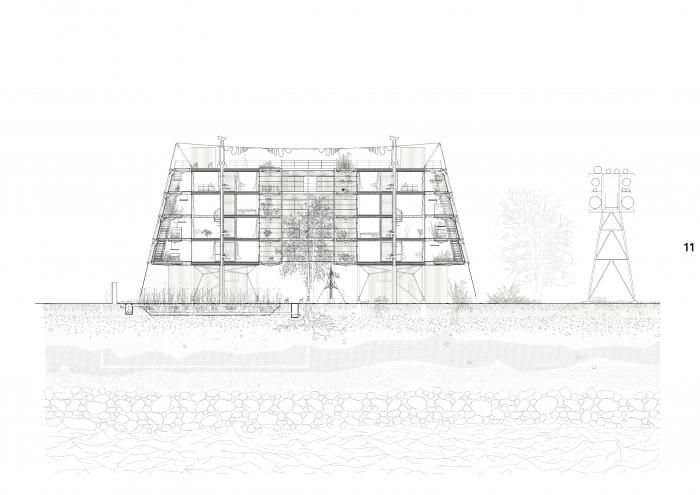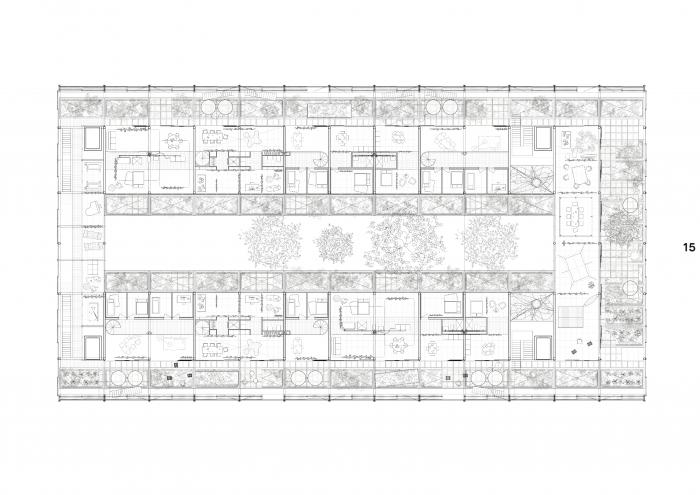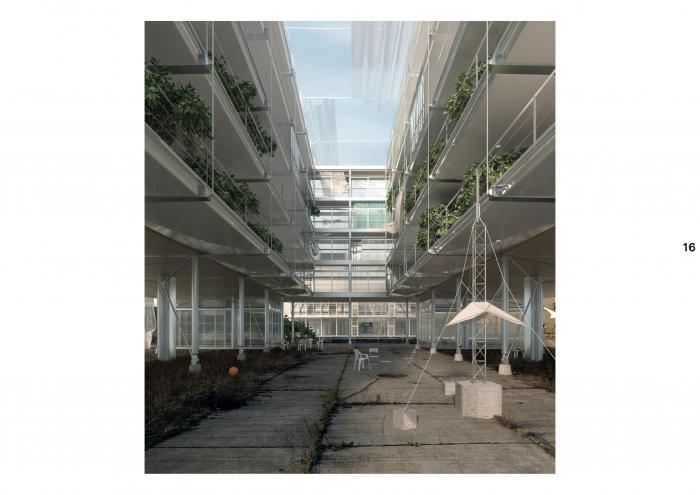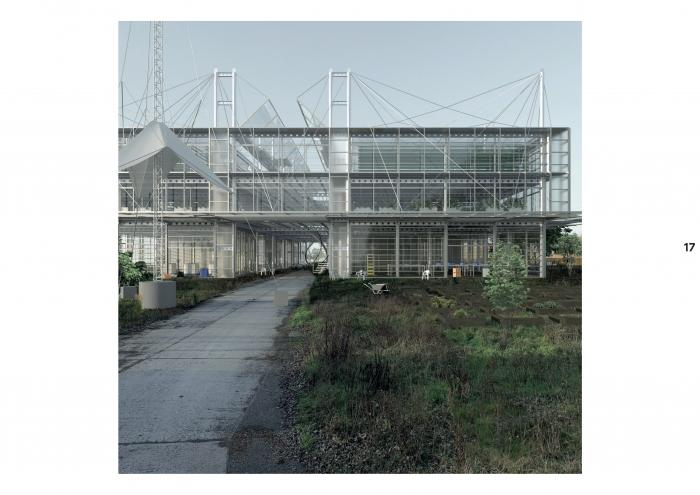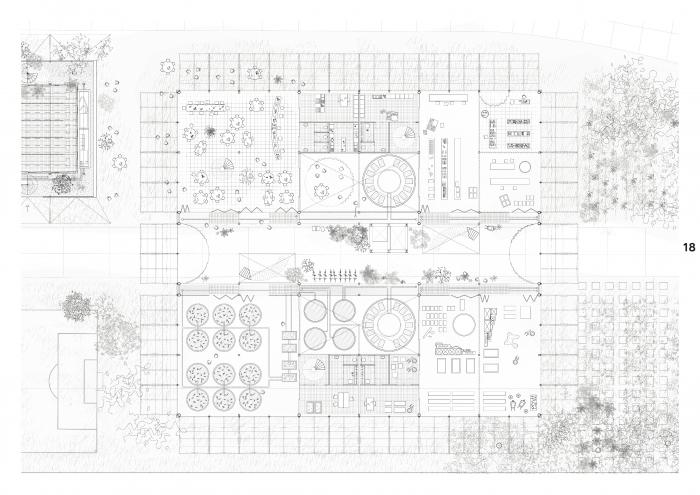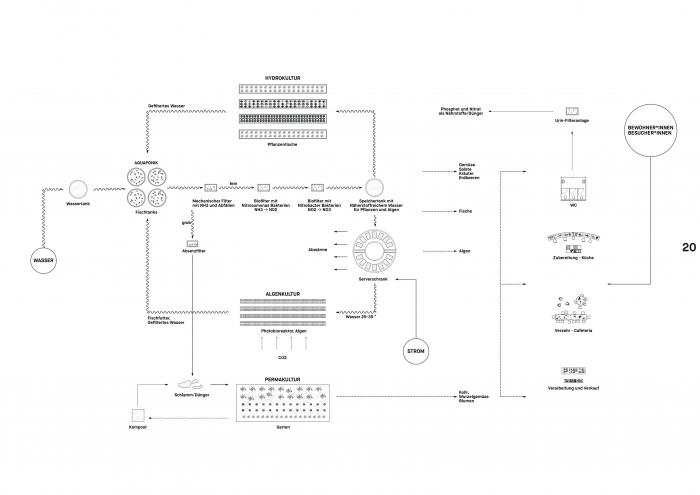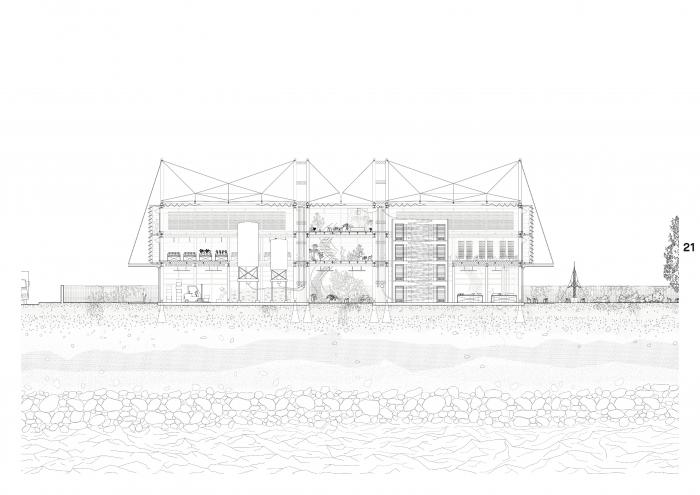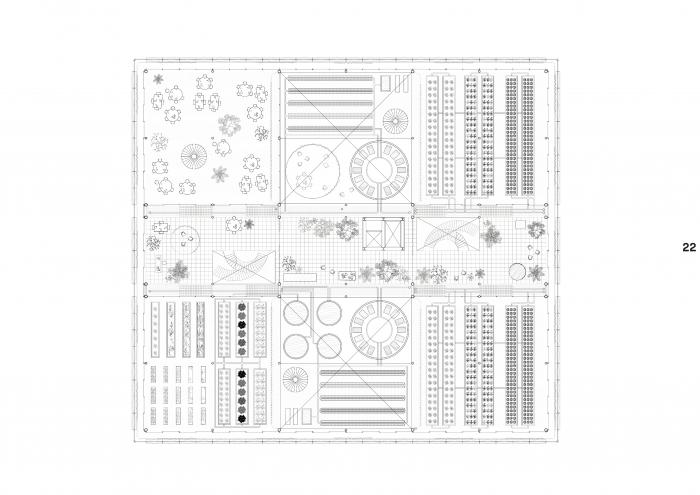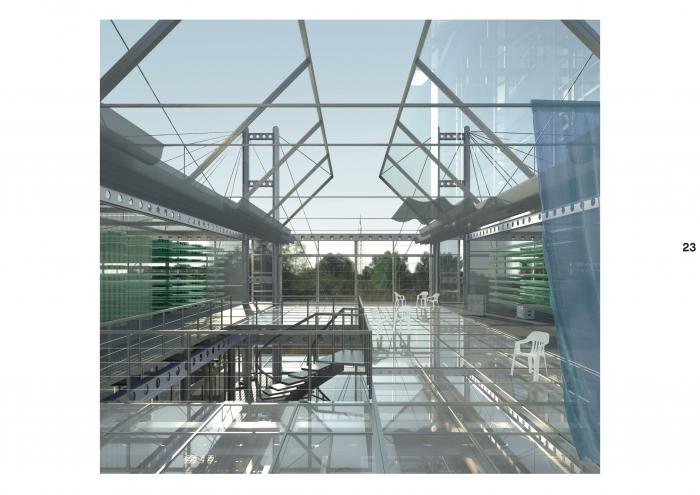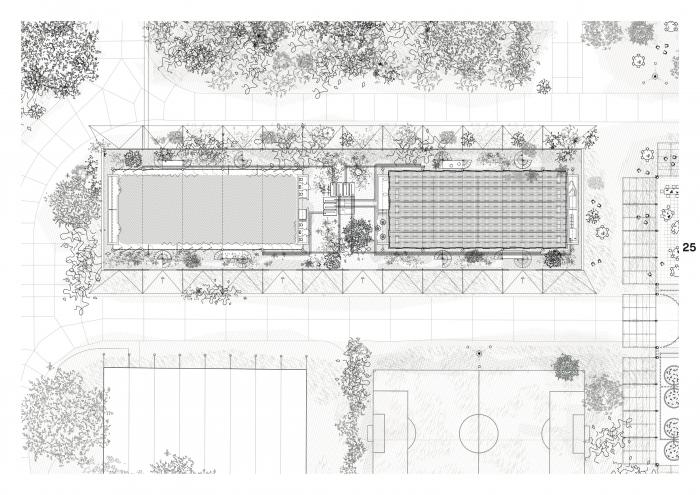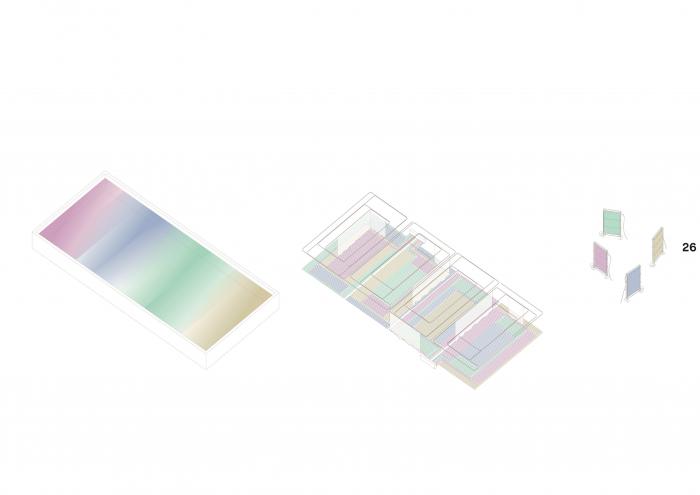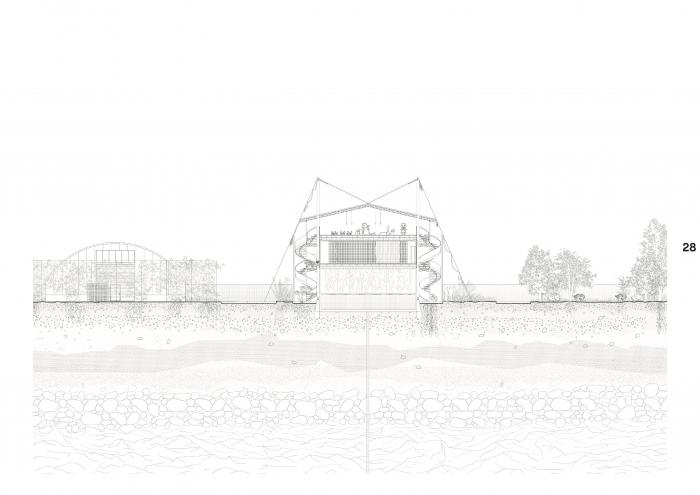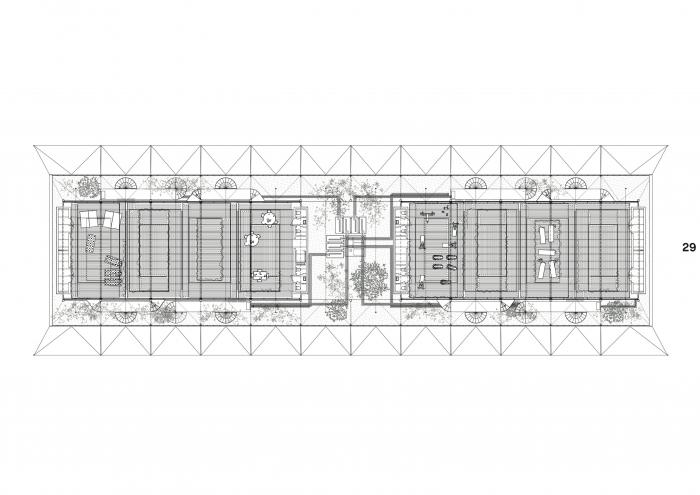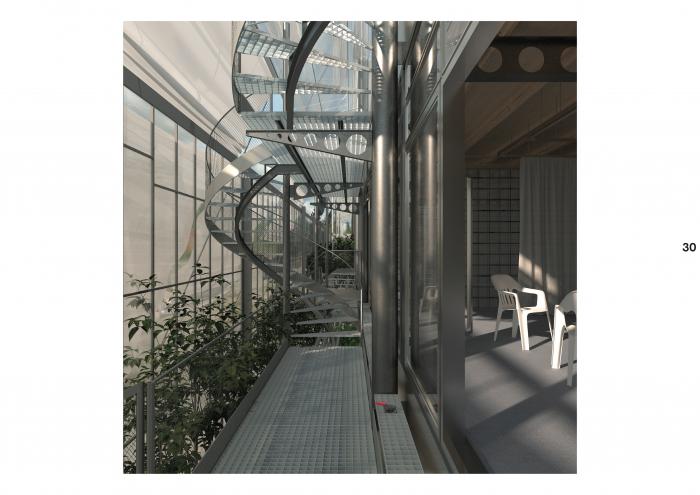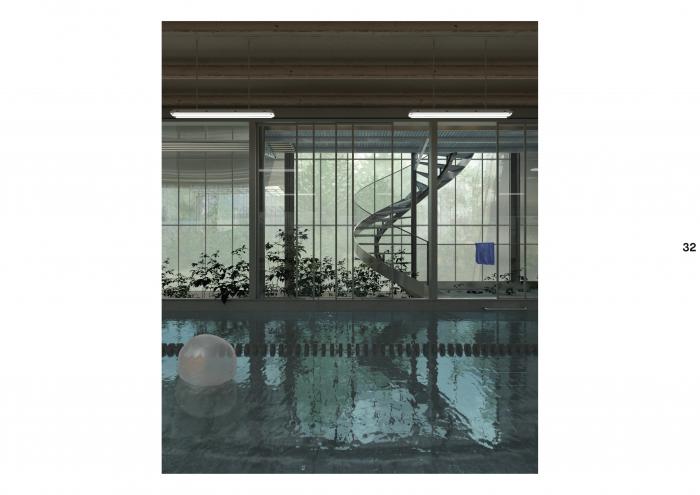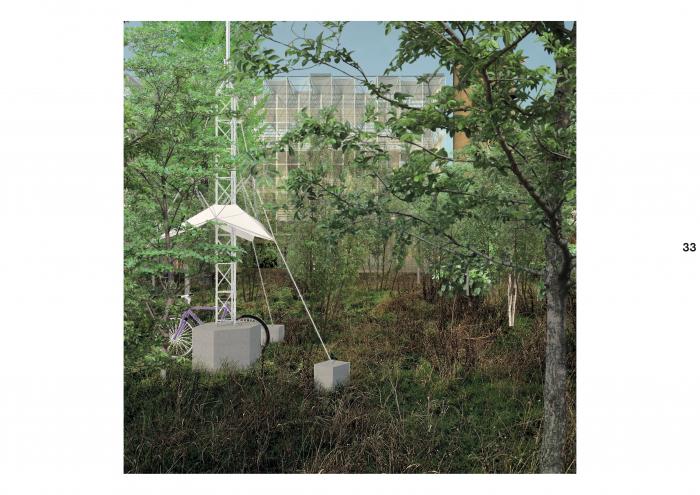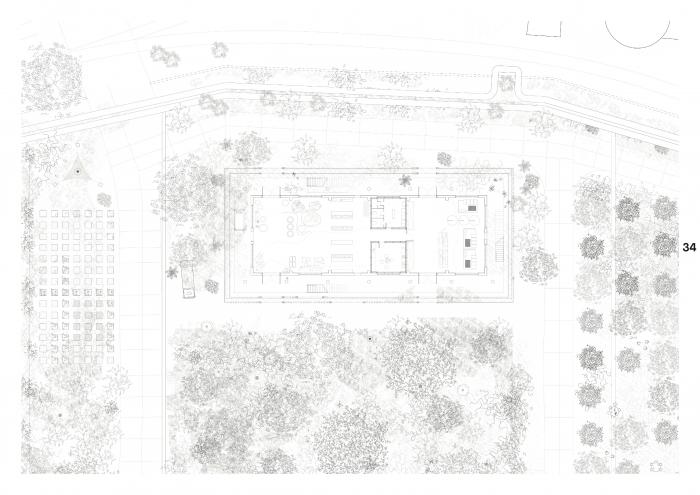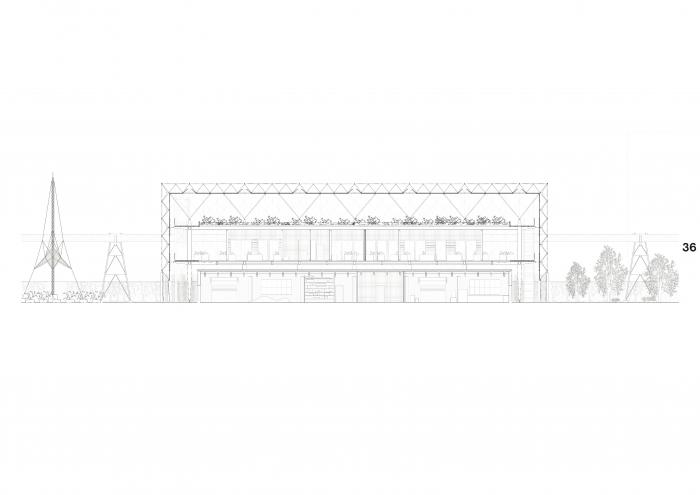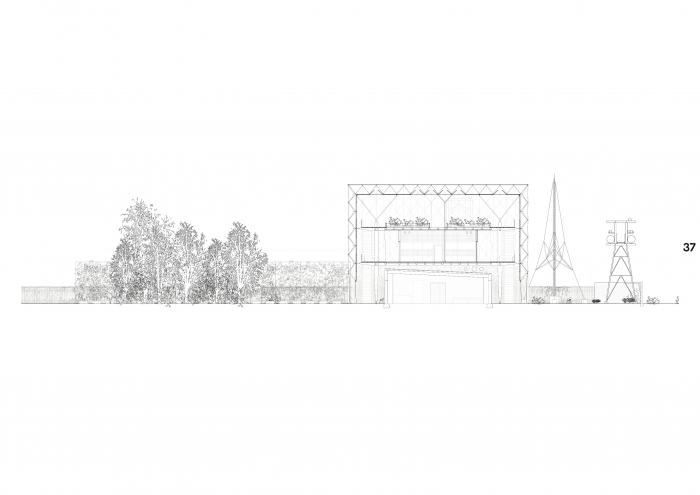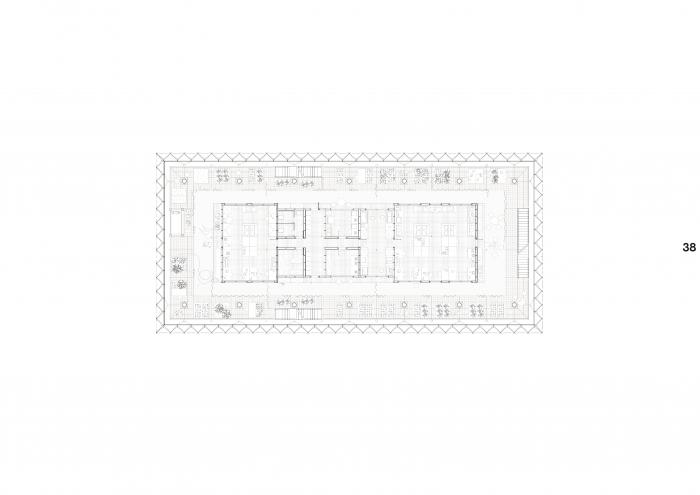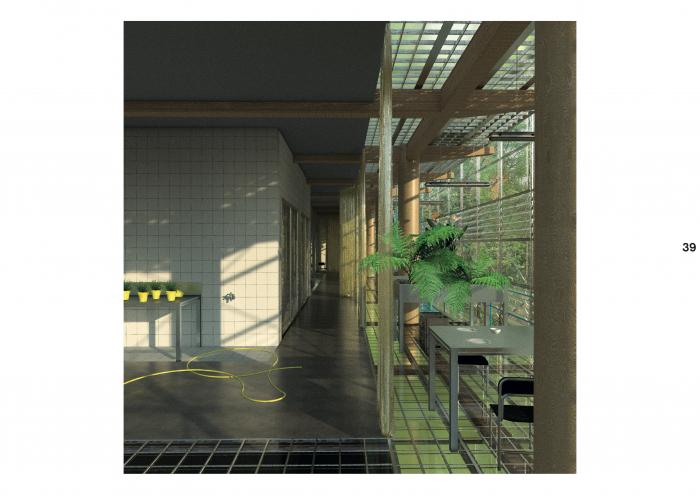I. SUMMARY INFORMATION
Project
269738
Status
Submitted
Award category
Solutions for the co-evolution of built environment and nature
You want to submit
NEW EUROPEAN BAUHAUS RISING STARS : concepts or ideas submitted by young talents (aged 30 or less)
Project title
Constructed Ecosystems
Full concept/idea title
A Walk Through Constructed Ecosystems
Description
The project is based on the perspective of viewing the urban as a constructed ecosystem. Taking this perspective, every form of life that contributes to the preservation of a livable and biodiverse environment comes to the fore and is taken into account in the process of imagining, developing and realizing a just and ecological society.
Where is your concept/idea being developed or intended to be implemented in the EU?
Germany
Berlin
Köpenicker Chaussee 6
Berlin
10317
II. DESCRIPTION OF THE PROJECT
Please provide a summary of your concept/ idea
A new form of continuous spatial production, energy supply, food production, residing, working and living, research and renaturation will be proposed for a formerly industrially used site in Berlin Rummelsburg with the aim of initiating the development of a social and ecological life practice. According to the vegetation, different areas are defined, which describe the future relationship between man and nature and an appropriate treatment of soil and vegetation. Areas of renaturation where man takes deliberate targeted measures to support nature in the process of wildness, areas of cultivated nature, research beds that analyze and evaluate the cultivation of plants under different conditions, and areas where contaminated soils are detoxified and renaturated through remediation measures. Existing tanks, originally used as water reservoirs, are being converted into the site's energy center. Through solar cells, biogas plants operated in cooperation with the municipal waste disposal, a combined heat and power plant and water tanks, a decentralized energy supply model is proposed that will make the surrounding area mostly independent of large energy suppliers. The Bioshelter, a residential building for about 200 people, proposes a productive, climate-active form of housing in which human and natural habitats overlap. The algae farm interconnects production cycles of aquaponics, algae production, and a server farm in a way that allows for resource-efficient year-round production. The Movement House transforms an existing industrial building into an infrastructure that stimulates and enables formal and informal movement among residents. The research station collects data on the state of the ecosystem, analyzes, evaluates, experiments, tries and maintains. The residents of the area become gardeners of their shared livelihood - people are involved in multiple ways in the processes that contribute to the preservation of the constructed ecosystem.
Please give information about the key objectives of your concept/idea in terms of sustainability and how these would be met
A sustainable perspective on the use of resources and the natural basis of life permeates all areas of life in the constructed ecosystem. Food and energy production is organized in a decentralized manner, the efficient use of resources is made possible by interconnecting different production and energy cycles, people become gardeners who actively participate in the care and regeneration of their environment, interspecific coexistence and symbiotic life forms are strengthened for the benefit of all. Productive resources, knowledge and cultural techniques are applied to maintain a living, biodiverse ecosystem. In this sense, sustainability is a multi-layered process that pursues the goal of keeping room for maneuver open.
The integration of flora and fauna into the immediate living reality of the residents provokes a responsible and conscious interaction of people with their environment. Awareness of the dependencies and interrelationships of different forms of life promotes an understanding of the importance of caring for and preserving the natural basis of life. The soil under the elevated building of the Bioshelter is renaturalized by reed plants and freed from toxins. The gray water produced in the area is filtered and treated by a constructed wetland. Food scraps are processed into fertilizer, and fecal matter passes through vacuum pipes into the biogas plant, which produces electricity and heating energy.
Please give information about the key objectives of your concept/idea in terms of aesthetics and quality of experience beyond functionality and how these would be met
The complexity of the constructed ecosystem can be experienced. Human, natural and technological movements and processes, constructed and evolved entities create a shared landscape that can be experienced both pragmatically and sensually. The inhabitants and users of the place maintain an active relationship with it. Aesthetics, then, includes the involvement of ecosystem actors and means the subjective and changing perception of all social, ecological, and economic interactions of humans with their surroundings. In contrast to the passive consumption of aesthetic images and styles, aesthetics is for us a process of becoming aware of multiple perceptions. We design with an awareness of the constructedness of the ecosystems that surround us, which means that we do not disguise its components and its functionality. The technical and natural components of the ecosystem itself become space-forming and reveal their peculiar aesthetics.
The blurring of the boundary between inside and outside, human and natural spheres, enables new forms of sensory perception of the habitat. Coexisting habitats expand the view beyond one's own species and stimulate an understanding of the direct involvement of the inhabitants in the maintenance of the ecosystem. Vermiculture, where food scraps from worms are turned into fertilizer, produces fertile soil and heat that is used to heat living spaces. Plants in the facade level of the public building become a sunscreen and cool the building through evaporative cooling. Overgrown places of the site become imaginative playgrounds, enchanted retreats, places to linger and dream.
Please give information about the key objectives of your concept/idea in terms of inclusion and how these would be been met
In order to enable a society that behaves inclusively also towards non-human forms of life, a tolerant and respectful coexistence is needed - spaces of existence, ecological niches and social spheres must be respected. To achieve such inclusion, a socially just society is the precondition. Our project aims to enable people's involvement, to promote their participation in the production of goods, food and space, to decentralize responsibility in order to shape an attentive and conscious approach to the living environment.
The integration of human life into natural energy and metabolic cycles not only dissolves the separation of different habitats and life forms, and the thermal distinction between inside and outside, but also works to eliminate social segregation of people from different social groups and classes.
The opening of the house contributes to the fact that the hard separation of man and nature dissolves in favor of shared, coexisting habitats, developing ecological niches and shelters that strengthen the biodiversity of the ecosystem. Planting trays in the greenhouse-like outer layers of the bioshelter allow flora and fauna to move into the floors of the apartment building. A vertical access core allows animals to traverse the upper floors, allowing human, plant, and animal life to overlap. The broken concrete in the public building expands the understanding of public in relation to other, non-human life forms.
Please explain the innovative character of your concept/ idea
In order to face the enormous challenges of todays socio-economic and ecological crisis, without knowing how future societies might look like, we believe in the need for a democratic, inclusive and open-ended process of experimentation, evaluation and discarding. In that sense we consider innovation to be a collaborative approach of negotiating our future society. The understanding of innovation can’t be reduced to a technological advance, to optimised products that are passively consumed, but demands the cooperation, the exchange of knowledge and shared experiences of people in their everyday life.
Therefore innovation exceeds being a permanent and inevitable invention of something new, but rather a process of critical re-evaluation of proven practices, which are put into different contexts to gain other perspectives.
So as to initiate the process of collective innovation our project radically expands the circle of actants being involved in it. The understanding of the city as an ecosystem goes hand in hand with the integration of all forms of life and moreover with the strong connection of technological developments, cultural processes, the collective practice of gaining experience and the distribution and transfer of knowledge.
The dissolution of the thermal envelope into different layers and the spatialization of the thermal separation into different climatic zones are associated with a variety of innovations. The thermal zones act as a climatic buffer. In winter, the rooms located deeper in the building are insulated, so that the heating requirement can be reduced, whereas the zones located outside can be naturally ventilated in summer, so that heat accumulation can be avoided and the interior temperature is lowered. The climatic differentiation of the interior spaces allows for the collective cultivation of beds by the house community, which is empowered to grow crops and food. Fundamentally, the integration of plant and animal life forms promotes an awaren
Please detail the plans you have for the further development, promotion and/or implementation of your concept/idea, with a particular attention to the initiatives to be taken before May 2022
Acknowledging the fact that issues regarding innovation, inclusion, aesthetics and sustainability are much more intertwined than we currently try to answer them, our interest in further development uses connectivity as a method. As a future development, we envision transferring the project to a smaller scale. As an interim use, fallow, unused plots of land in Berlin could be sought out and opened up as a testing ground for the collaborative process of working with civil society actors. With the perspective we have described, a specific place is to be considered, examined and evaluated, so that the question of what further development is reasonable and possible arises from what is found. It is important for us to understand the project, despite its smaller scale, as a complex interaction of the different aspects that we address with our contribution. It is precisely the connection between social and ecological issues, different ways of life, means of production, energy cycles, research methods and cultural practices that forms the basis for our attempt to think about a just and ecological society.
The insights we gained during the development of the "constructed ecosystem", which can only be described superficially in the context of this application, we want to put into practice prototypically with experts.
Specifically, we want to establish a closed-loop system at a site of former industrial use that offers social, economic and ecological added value. The utilization of human excreta to produce liquid fertilizer and biogas from biomass.
We would be happy to start the construction of a small ecosystem this year. Financial support from the EU would be very valuable for us.
III. UPLOAD PICTURES
IV. VALIDATION
By ticking this box, you declare that all the information provided in this form is factually correct, that the proposed concept/idea has not been proposed for the New European Bauhaus Rising Stars Awards more than once in the same category.
Yes
